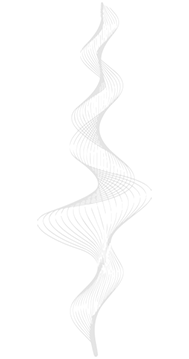Crooked Nose and Rhinoplasty: The Goal Is Harmony, Not Perfection
Our nose holds great importance not only because it is located at the center of our face, but also because it is both an aesthetic and functional organ. When people think of nose aesthetics (rhinoplasty), they often imagine a symmetrical, slim, and smooth nose. However, when it comes to a crooked nose—one of the most challenging types from a surgical perspective—the goal should be harmony, not perfection. Because in such cases, it’s not just about aesthetics; there are also complex anatomical asymmetries, breathing issues, and even the overall balance of the face to consider.
When we say “crooked nose,” most people think of a nose that appears deviated to the right or left. But the reality goes much deeper. The deviation is not limited to the external contour; the internal structures of the nose—such as bone, cartilage, and mucosa—are often asymmetric as well. Moreover, the rest of the face (forehead, chin, cheekbones) may not be completely symmetrical either. This leads to one of the most crucial decisions the surgeon must make: Should the nose be aligned with the center of the face, or positioned in accordance with the overall facial asymmetry?
This is where crooked nose surgery differs from classic rhinoplasty. Because the goal is not just to straighten the nose, but to re-establish proportional harmony within the face.
Surgeries for crooked noses almost always require an asymmetrical surgical approach. For example, more bone or cartilage may be removed from one side of the nose while the other side is supported; cartilage grafts are placed in weaker areas, and stronger structures are reshaped. In these procedures, each side of the nose receives different interventions—in other words, achieving symmetry often requires asymmetrical planning.
After such precise interventions, tissue memory can sometimes come into play during the healing process, and the nose may tend to revert to its previous shape. Therefore, with crooked noses, small revisions may be needed more frequently during the recovery period. This does not indicate a failed surgery; on the contrary, it shows that the surgeon and patient should follow this process together.
Results of crooked nose surgery are not immediately visible. In the first few weeks, swelling, bruising, and uncertainty in shape are completely natural. It typically takes between 6 months to 1 year for the true form of the nose to settle. During this time, the subcutaneous swelling decreases, and the nose takes its final shape. Once healing is complete, the appearance becomes clearer and more permanent. However, rarely, a minor surface irregularity or slight asymmetry may be noticed by the patient. At this point, minor “revisions” with small touches are a natural part of the process.
The ultimate goal of the surgeon in crooked nose surgeries is to achieve a natural form that best harmonizes with the overall structure of the face. When a nose functions well for breathing and suits the person’s profile and facial expressions, the surgery is successful both aesthetically and functionally.
As a result of this type of rhinoplasty, the patient not only gets a more beautiful nose but also breathes more comfortably, gains more self-confidence, and enjoys a more balanced appearance in harmony with their face.
Crooked nose surgeries remind us that the nose is not merely an aesthetic object but a functional structure, where proportion, balance, and perception come together in the hands of a skilled surgeon. When approached with patience and realistic expectations, these surgeries highlight naturalness, balance, and satisfaction, making long-lasting success possible.
In short, the goal in a crooked nose is never geometric perfection, but rather a natural harmony that suits the spirit of the face.



